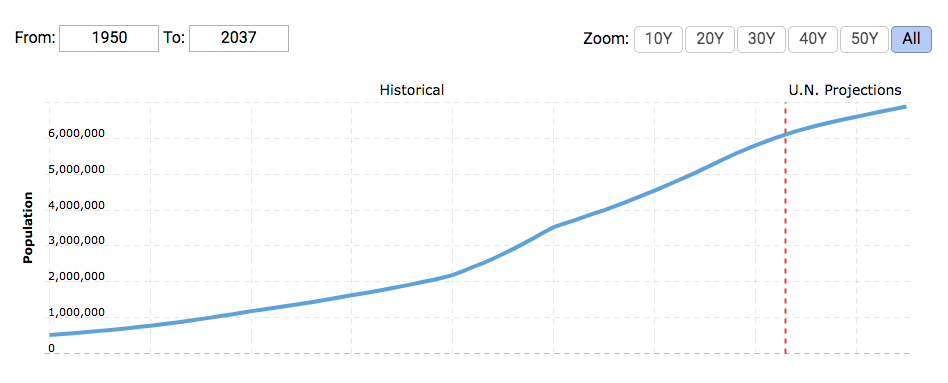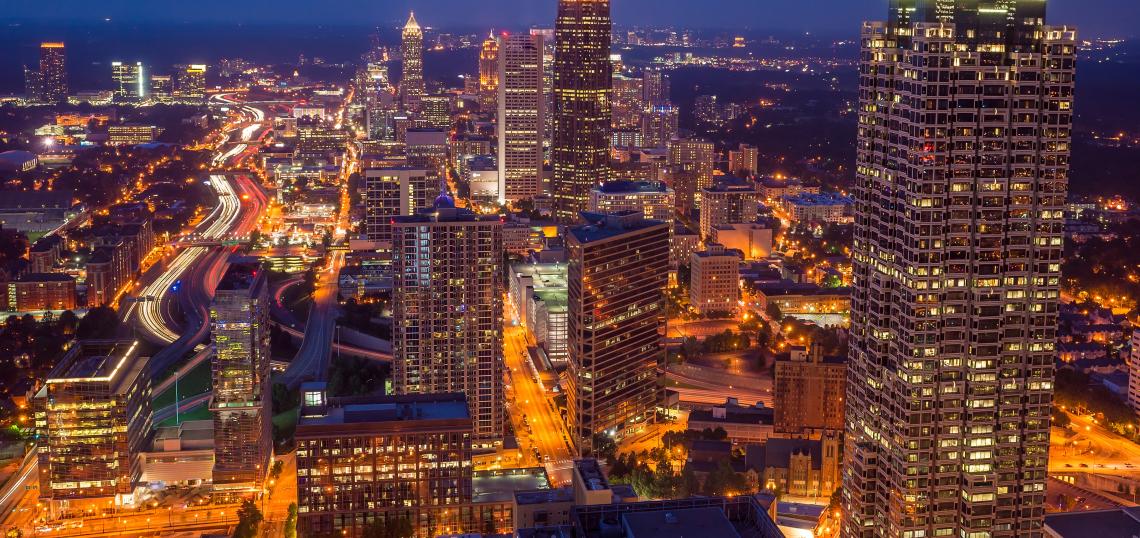Remember 1997?
Maybe you were toddling around a preschool, learning to ride a bike, graduating high school, or enjoying the first year of retirement back then, when Atlanta’s Olympics hangover was subsiding, the city’s crackdown on Freaknik had begun, and Mark Lemke was fielding grounders for the Braves.
In any case, the metro Atlanta of 1997 may have seemed big at the time. Just like a quarter-century might feel like a long time ago.
But according to calculations by research firm Macrotrends, our ever-swelling metropolis is now roughly twice the size it was in 1997, when the population first edged over 3 million. And by all projections, Atlanta’s growth shows no signs of stopping in decades to come.
The Atlanta Regional Commission, for example, foresees the 21-county metro area pushing 9 million residents by the year 2050. Imagine telling that to someone in 1950, when the entire metro counted just over a half-million souls.
 A calculation of metro Atlanta's population over the past seven decades, beginning with an estimated (and measly) 513,000 residents in 1950. Macrotrends
A calculation of metro Atlanta's population over the past seven decades, beginning with an estimated (and measly) 513,000 residents in 1950. Macrotrends
All of this comes to mind in light of the U.S. Census Bureau’s recent report showing metro Atlanta packed on another 79,000 residents between the summer of 2021 and last July.
The Census’ ranking of the Top 10 most populated U.S. metros also shows that metro Atlanta continues to leave the Miami area in the dust, having leapfrogged Florida’s largest city for the No. 8 spot in 2021.
If current growth patterns hold steady, metro Atlanta could surpass both of the next-largest metros in the country—Washington DC (No. 6) and Philadelphia (7)—within a couple of years, according to Census data.
Metro Washington added less than 10,000 people, and Philly actually lost 12,100 residents during the same time period, per the bureau.
Granted, this larger metro’s annual growth rate is smaller today (1.55 percent over the past year, per Macrotrends) than the boom-times 1990s, when year-over-year population gains of nearly 5 percent were common.
It’s all food for thought. And the metro Atlanta of the late 1990s, with its measly 3 million people, now seems quaint.
But smart money says the droves will keep coming, so long as we're all alive. Are we doing enough to prepare? Is growth necessarily a good thing? Or should we just roll with it—and deploy that immortal local greeting whenever possible?
...
Follow us on social media:
• Atlanta tops two more national lists: One good, one dismal (Urbanize Atlanta)








